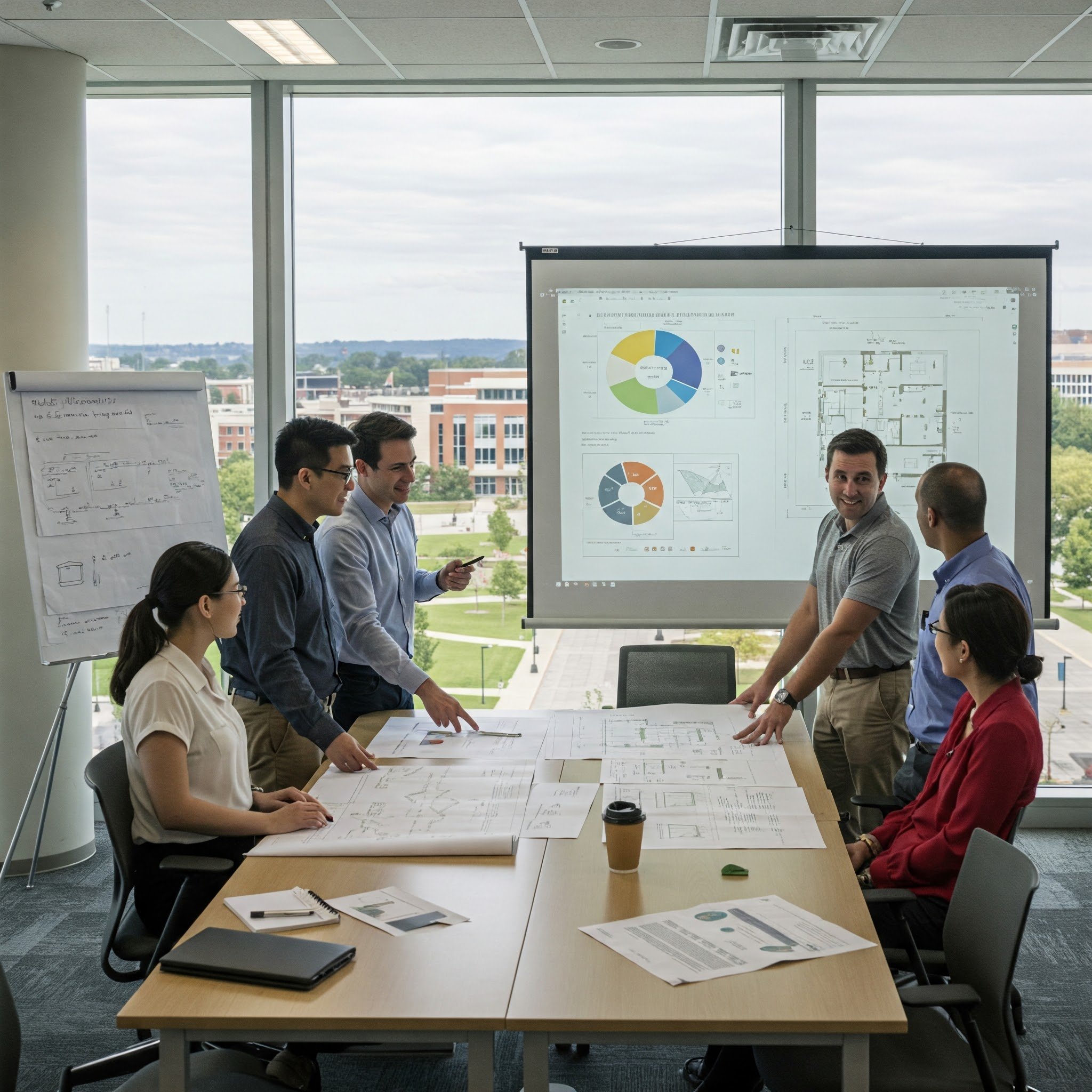Is Your Building Truly Agile? Unmasking the Limitations of Fixed Infrastructure in Today's Evolving Workplace
The conversation around the modern workplace is dominated by adaptability. Commercial real estate owners are seeking properties that attract forward-thinking tenants, architects are designing spaces for maximum flexibility, facility managers are tasked with optimizing dynamic environments, and electrical design firms are grappling with the demands of ever-changing layouts.
While the concept of the "flexible workspace" – offering employees a choice of work settings – has gained traction, achieving true "agility" – the inherent ability to easily and cost-effectively reconfigure the physical space itself – remains a significant challenge, largely due to the constraints of traditional power infrastructure.
Powering the Smart Building: Why a Hybrid AC/DC Approach is the Pragmatic Future
The discussion around Direct Current (DC) power in commercial buildings is gaining momentum, fueled by its potential for enhanced energy efficiency and seamless renewable energy integration. However, a common concern in the industry is whether embracing DC necessitates a costly and disruptive rip-and-replace of existing Alternating Current (AC) infrastructure.
The reality is far more pragmatic: the future of building power lies in a hybrid AC/DC approach, particularly when considering the practicalities of building retrofits.
Powering the Future: How Agile Furniture Can Bridge the Gap to DC-powered Office Buildings
The question of why direct current (DC) power hasn't yet revolutionized our buildings often sparks debate among owners, facilities managers, and architects. A common assumption is that our ingrained reliance on alternating current (AC) powered devices, particularly computers, acts as an insurmountable barrier. While the historical dominance of AC infrastructure and the vast ecosystem of AC-powered electronics undeniably play a significant role, this perspective overlooks the evolving landscape of technology and the compelling advantages of DC power in modern buildings.
Guaranteed Green: The ESI Model Explained
For professionals across industries, particularly those focused on sustainability, finance, and operations, the Energy Savings Insurance (ESI) model presents a compelling solution to accelerate the adoption of energy efficiency upgrades, especially within the SME sector. ESI strategically addresses a key barrier: the perceived risk associated with realizing projected energy savings.
California's Energy Mandate: What Title 24 Means for Your Office - Today and Tomorrow
California's commitment to energy efficiency is reflected in Title 24, officially known as the Building Energy Efficiency Standards. Published and regularly updated by the California Energy Commission (CEC), these comprehensive regulations aim to decrease energy consumption and reduce greenhouse gas emissions from buildings throughout the state. Updated every three years to incorporate the latest technological advancements, the current version of Title 24 took effect in January 2023 and will remain the standard until January 2026.
Go Direct. Build Better
Traditional Requests for Proposals (RFPs), inherently biased towards AC infrastructure, often sideline or completely ignore the superior potential of DC. This outdated approach not only hinders the adoption of cutting-edge technology but also limits our clients' ability to unlock substantial long-term benefits.
Beyond AC: How to Initiate the DC Discussion in Building Design
The paradigm of Alternating Current (AC) as the default power distribution system in buildings is being challenged. Advancements in renewable energy, battery storage, and a growing prevalence of Direct Current (DC) powered devices are highlighting the potential for increased efficiency, resilience, and sustainability in DC-powered buildings. However, initiating a serious evaluation of DC alongside traditional AC often requires a deliberate and strategic approach. As a building owner or architect, how can you effectively prompt a thorough exploration of both options for your next project? Here are key tactics to consider, moving beyond the conventional:
From Vacant to Vibrant
The commercial real estate landscape is undergoing a seismic shift. With rising construction costs, supply chain uncertainties, and an urgent emphasis on sustainability and resilience, new office construction is experiencing a noticeable slowdown. Compounding this, major US markets are seeing a surge in unoccupied older office buildings.
Vacancy rates in older commercial properties are reaching unprecedented levels, signaling a critical need for revitalization. This dearth of new builds, coupled with the glut of underutilized older spaces, presents a unique opportunity to reimagine existing structures, transforming them into modern, efficient, intelligent, and resilient workspaces through strategic retrofitting. Critically, this need is amplified by the looming electrical power crisis, driven by the exponential growth of AI and data center demands, which necessitates a focus on energy efficiency and resilient power solutions in building retrofits.
The Retrofit Revolution: Unlocking Hidden Value in Older Buildings
The modern workplace landscape is rapidly evolving, driven by the preferences of a younger, digitally native workforce and the rise of flexible work models. For building owners looking to attract Gen Z and millennial tenants, simply offering square footage is no longer enough.
The key lies in reimagining older buildings through strategic retrofits that blend industrial chic aesthetics with agile functionality, creating spaces that resonate with the values and work styles of these demographics and are designed for flexible, subscription-based models. This is particularly crucial as new office construction remains stagnant, creating a prime opportunity for retrofitted spaces to capture the growing demand for flexible work arrangements.
DC Power: The Strategic Edge in Commercial Retrofits
The evolving commercial real estate landscape demands adaptable, sustainable, and technologically advanced spaces. Building owners and architects are tasked with reimagining existing structures to meet the dynamic needs of modern businesses, particularly the growing preference for flexible, subscription-based coworking environments. Retrofitting older buildings with direct current (DC) power systems presents a strategic opportunity to achieve these objectives.
This article examines the compelling advantages of DC power retrofits over conventional alternating current (AC) systems, highlighting the potential for substantial upfront and operational savings, enhanced flexibility, and improved sustainability. Furthermore, we address the unique challenges associated with retrofitting older buildings and underscore the critical role of qualified MEP engineering or electrical contracting firms in project success.
The Agile Office Playbook: Design, Launch, and Optimize
The modern workplace is in constant flux, and as we move further into 2025, the demand for flexible, subscription-based office solutions is skyrocketing. But what does it take to design a space that truly resonates with today's professionals? It's more than just throwing up some desks and calling it a co-working space; it's about crafting an experience.
Workspaces in Motion: The Agile Furniture Revolution
Agile furniture is not just a trend; it's a fundamental shift in how we design and utilize workspaces. It empowers us to create truly adaptable, sustainable, and user-centric environments that support the evolving needs of the modern workforce. I believe agile furniture will continue to shape the future of work, fostering more flexible, collaborative, and productive workspaces.













